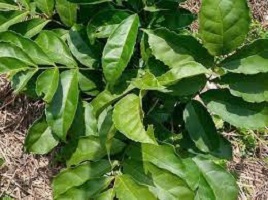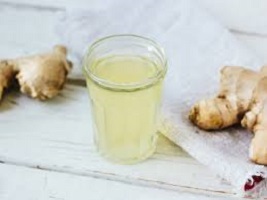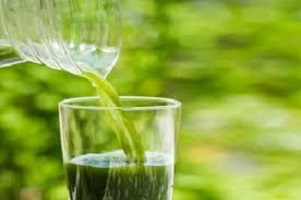Ewe Akoko for Fertility: How to Use & Health Benefits
Ewe Akoko for Fertility: How to Use Ogirisi and Health Benefits. Please watch.

“Ewe Akoko” refers to a type of plant commonly used in traditional medicine, particularly in some African cultures, for various purposes, including fertility.
However, it’s important to note that traditional remedies and herbal treatments may not have scientific evidence to support their efficacy, and their safety can be uncertain.
If you are considering using Ewe Akoko or any other traditional remedy for fertility, it’s crucial to consult with a qualified healthcare professional before doing so.
Fertility issues can have various underlying causes, and a healthcare provider can help identify and address those issues in a safe and evidence-based manner.
Additionally, fertility treatments should be approached with caution, as some herbs and plants may have side effects or interactions with other medications.
A healthcare professional can provide personalized advice based on your specific health situation.
Remember that fertility is a complex issue, and it’s essential to work with qualified healthcare professionals to ensure the best possible outcomes.
If you are considering using Ewe Akoko or any traditional remedy for fertility, it’s important to approach the topic with a thoughtful and informed perspective.
- How To Use Ewe Akoko (Ogilisi) For Fertility
- Image & English Name
- How to Use Ewe Akoko Plant for Fertility – Ogirisi leaf for Fertility
- How To Use Ewe Akoko (Newbouldia laevis) for Fertility – Ogirisi for Fertility | Benefits of Ogirisi Leaves | Health Benefits of Ewe Akoko Fertility Plant
- Uses of Susumasa (Newbouldia Laevis)
- Benefits of Ogirisi Leaf/ Ewe Akoko
- See How I Use Fertility Plant (Ewe Akoko) To Treat My Menstrual Disorders
Related >>>>
- Clove Soaked in Water for Infections, Ovulation, & Fertility
- Okra Water for Fertility ~ How to Boost Ovulation with Okro
- 15 Health Benefits of Goron Tula Fertility Fruit
Ewe Akoko for Fertility
Ewe Akoko for Fertility Botanical Name is Newbouldia laevis, also known as the Ewe Akoko among the Yoruba of West Africa, Aduruku among the Hausa, and Ogirisi/ogilisi among the Igbo is a genus of plants in the Bignoniaceae family endemic to Africa.
In English, it’s known as The Fertility Leaf, and it’s employed for medicinal, herbal, and aphrodisiac purposes.
Some people believe that eating ewe akoko has spiritual benefits, but I’m not going to get into that. Some use it for health reasons, while others use it as part of their religious rituals.
This ewe leaf is good for a woman’s reproductive system. It is used to treat infertility, hormonal imbalances, menstrual irregularities, adhesion (pelvic inflammation or pelvic organ scarring), and other conditions.
Ewe Alomo promotes ovulation and enhances the likelihood of becoming pregnant.
What does it mean to be fertile? Ewe Akoko for Fertility
Fertility refers to a woman’s ability to conceive a child.
What is the definition of infertility?
Although the terms subfertility and infertility are frequently used interchangeably, they are not comparable.
Subfertility refers to a delay in conceiving while infertility is described as the inability to conceive naturally after a year of trying.
With subfertility, natural conception is achievable, however, it takes longer than normal.
Health Benefits Ewe Akoko
- During labor, the young fresh leaves can be boiled with a red oil drink to assist in easy delivery and reduce labor discomfort.
- To cure dental cavities and relieve pain, a tea of the leaf is gargled in the mouth for 4-5 minutes continually.
- The bark of the ogirisi tree contains stomachic and analgesic properties.
- Dysentery, diarrhea, epilepsy, cough, and convulsions are all treated with a decoction.
- As a treatment for piles and constipation, an infusion of the bark is taken in the form of an enema.
- Snuff made from dried powdered bark and alligator pepper (Aframomum melegueta) is used to alleviate migraines and sinusitis. The bark when applied externally is used to treat wounds, ulcers, and abscesses.
- Intestinal issues such as worms are treated with an infusion of ethanol extract of the root.
- The root extract is a laxative that is used to treat constipation.
- Arthritis and rheumatic aches can be effectively treated by macerating the root.
- To relieve toothache, the powdered root is mixed with chili pepper (Capsicum frutescens) and placed in a carious tooth.
- What is the purpose of Akoko leaf? Uses
Fever, headaches, convulsions, epilepsy, scrotal elephantiasis, as an aphrodisiac,
and manic illnesses are all treated using the root and leaves of this plant.
Akoko boosts sperm production and quality while increasing the count.
Newbouldia laevis maintain an erection and premature ejaculation by increasing blood flow to the genitals.
The leaves are used to make black soap.
Is it possible for Ewe Akoko/Ogirisi to increase fertility? Is Ewe Akoko Good for Fertility?
This Ogirisi plant is used to cure a variety of gynecological disorders, including miscarriage, irregular menstruation, insufficient menstrual flow, menstrual discoloration, painful menstruation, menstrual suppression, and others, according to empirical evidence.
A shortage of or irregular quantity of one or more hormones might delay or block any of the preceding stages, making pregnancy more difficult. Ewe Akoko encourages a healthy hormonal profile, which increases the odds of conception. Hormones have a significant role in female reproduction, particularly those that regulate the menstrual cycle.
Ewe Akoko for Fertility
In order for a pregnancy to occur, hormones in the body must communicate and govern the production of an egg within the ovary, its release into the woman’s fallopian tube, and the thickening of the uterine lining in getting ready for implantation.
Men, too, appear to be affected by the herb’s anti-fertility qualities.
Although the leaves of Newbouldia laevis modify many reproductive hormones, they should be used with caution by males because they have a tendency to suppress testosterone levels slightly. For men, testosterone is an important hormone.
How to use ewe Akoko for fertility
- Remove three to five leaves from the plant and boil them in normal water for 5 to 10 minutes.
- After allowing it to settle for 24 hours, mix the original natural honey with the cooked leaf water extract.
- Drink a full glass cup of the extract or tea twice a day for six weeks (morning and night)- first in the morning.
Herbal medicine practitioners advocate drinking the Ewe Akoko extract a day after your menstruation and continuing for 5 days to boost ovulation and increase your chances of conceiving.
Ewe Akoko’s Adverse Impacts/Side Effects of Ewe Akoko
Herbal remedies, despite their “naturally innocuous” reputation, can cause major adverse drug reactions (ADRs), with quick allergic reactions being especially harmful in people who are sensitive to the herbs.
People Also Ask
Here are some questions that you may want to consider:
What is the traditional use of Ewe Akoko for fertility?
Understanding the historical and cultural context of the use of Ewe Akoko can provide insights into its traditional applications.
Is there scientific evidence supporting the use of Ewe Akoko for fertility?
Investigate whether there are any scientific studies or clinical trials that support the effectiveness of Ewe Akoko for enhancing fertility.
What are the potential risks or side effects associated with Ewe Akoko?
Like any herbal remedy, Ewe Akoko may have potential risks or side effects. Consult with a healthcare professional to understand these aspects.
Have there been any reported success stories or testimonials related to the use of Ewe Akoko for fertility?
Anecdotal evidence can provide some insights, but it’s important not to rely solely on personal stories without scientific backing.
Are there any contraindications or interactions with medications?
Determine if there are any potential interactions between Ewe Akoko and medications you may be taking or conditions you may have.
What is the recommended dosage and method of administration for Ewe Akoko?
Understanding the proper dosage and administration of Ewe Akoko is crucial for its potential efficacy and safety.
Have you consulted with a healthcare professional before using Ewe Akoko for fertility?
Seeking advice from a qualified healthcare provider is essential before incorporating any herbal remedy into your fertility regimen.
Are there other lifestyle factors that may be impacting fertility that should be addressed?
Fertility is influenced by various factors, including diet, exercise, stress, and overall health. Consider addressing these aspects alongside any herbal treatments.
Remember that fertility issues can be complex, and it’s crucial to approach them with a comprehensive and evidence-based perspective. Always consult with healthcare professionals to ensure that your choices align with your overall health and well-being.
What is the Ewe Akoko fertility leaf called in Igbo?
Ogirisi (botanical name: Newbouldia laevis) is a plant native to Africa that can also be found in other parts of the world.
The name ‘Ogirisi’ is of Igbo origin. It is known as ‘Ewe Akoko’ in Yoruba and ‘Aduruku’ in Hausa.
What is Newbouldia laevis used for?
According to the literature: A decoction is used to treat coughs, diarrhea, and dysentery, as well as to treat epilepsy and convulsions in children.
As a treatment for constipation and piles, the bark is administered as an enema.
What is the meaning of Newbouldia laevis?
The Boundary Tree
Newbouldia laevis (P. Beauv.) Seem. or “Boundary Tree” is a medium-sized angiosperm in the Bignoniaceae family.
It is native to tropical Africa and is commonly used to mark property boundaries in rural areas in West Africa.
What is the common name for Newbouldia laevis and its uses?
Newbouldia is an African plant genus in the Bignoniaceae family.
It is a monotypic genus that includes the species Newbouldia laevis (common name: boundary tree).
The tree is found throughout West and Central Africa. It is frequently used as a boundary marker.
Does Moringa help with fertility?
May improve fertility
Moringa leaves and seeds are high in antioxidants, which may aid in the fight against oxidative damage, which can interfere with sperm production or damage sperm DNA
What do Igbo people call twins?
The Igbo word for twins is ejima.
It is an abbreviation for ejirimara, which means “look-alikes.”
What are the benefits of Umhlonyane?
Umhlonyane is primarily used to treat coughs, colds, fever, loss of appetite, colic, headache, earache, and intestinal worms.
Is Susumasa safe to take while pregnant?
Susumasa leaves and tree bark are used as uterine stimulants for pregnant women at term.
This is to aid in the delivery process by promoting uterine contraction and making labor more comfortable for the woman.
A rat study confirmed that ogirisi leaves aid in uterine contractions.
What is the English name for Nunum?
In the East Indies, it is known as clove basil, and in parts of Africa, it is known as scent-leaf.
In Ghana, it is known as “Nunum.” Great for tea, pesto, salads, and dressings
What is the Musasa tree used for?
Msasa vs. Musasa (Brachystegia spiciformis)
Traditional or medicinal applications:
#The bark contains tannin, which is used in the tanning of hides; a bark extract is used to treat diarrhea, and a decoction is made to treat conjunctivitis.
What is Ogirishi’s English name?
Ogirisi (Newbouldia laevis) is a plant native to Africa that can also be found in other parts of the world.
The name ‘Ogirisi’ is of Igbo origin. The Yorubas call it ‘Ewe Akoko,’ while the Hausa call it ‘Aduruku.’
What tree is used to make medicine?
Tulsi, pudina, curry leaves, and aloe vera plants are well-known for their medicinal properties, but the country is also home to large trees with special significance in Indian Ayurveda. The bahera tree, Albizia lebbeck, Maulsari, Indian Mahogany, and Eucalyptus are also on the list of famous medicinal trees in India.
What exactly is a fertile leaf?
Fertile leaves, as opposed to sterile leaves, are ephemeral in the sense that they wither quickly after shedding their spores, leaving 5-20 sterile leaves on the stem below.
Fertile leaves are always uppermost on the stem apex because they grow and die before the leaf above them unfurls.
What are the health benefits of Nunum leaves?
Ocimum gratissimum
- Family Name: Lamiaceae.
- Medicine: The leaves and stems are used internally in the treatment of colds, especially chest colds; fevers, headaches, impotence, flatulence, diarrhea, dysentery, post-partum problems, and worms in children
- Disease Treated:
- Traditional Uses:
- Medicinal Plants.
Which tree has the medicinal cure for malaria?
Quinine, extracted from the bark of the cinchona tree, was used as an antimalarial agent as early as 1632 (Baird et al., 1996), and it was still the only known antimalarial agent by the 19th century.
Cinchona trees have been cultivated all over the world for this purpose.
What herbs make a woman fertile?
Here are a few kitchen herbs to consider if fertility health is on your mind.
- Garlic is the ubiquitous herb used by nearly every culture.
- Ginger
- Turmeric
- Nettles
- Cayenne
- Cinnamon
What herbs can I drink to get pregnant?
Here is a list of five such herbs that can be helpful.
- Shatavari (Asparagus) Asparagus is well-thought-out as a female reproductive tonic and as the name suggests, the tonic has the capability to increase fertility and vitality
- Withania somnifera (Ashwagandha)
- Chinese herbs
- Agnus castus (chasteberry)
- Black cohosh
Beware!
Using this plant for fertility, especially among women, should be approached with caution due to its proclivity for terminating early pregnancy or causing abortion.
Disclaimer:
The opinions expressed in this article should not be used in place of medical advice. Please contact your treating physician, for more information


